【实例简介】Network and Discrete Location_ Models, Algorithms, and Applications, Second Edition (2013)
算法 参考书目
【实例截图】

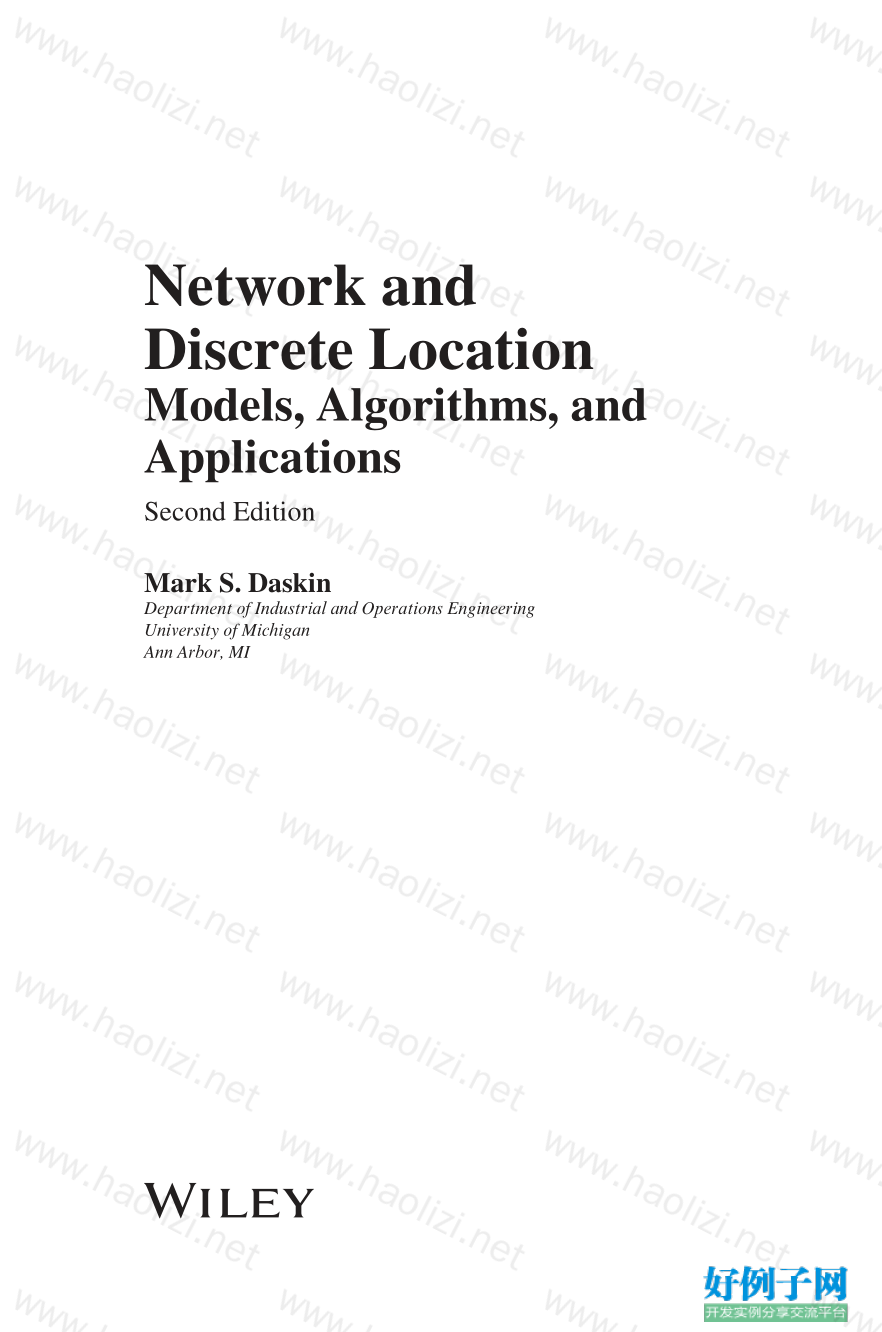

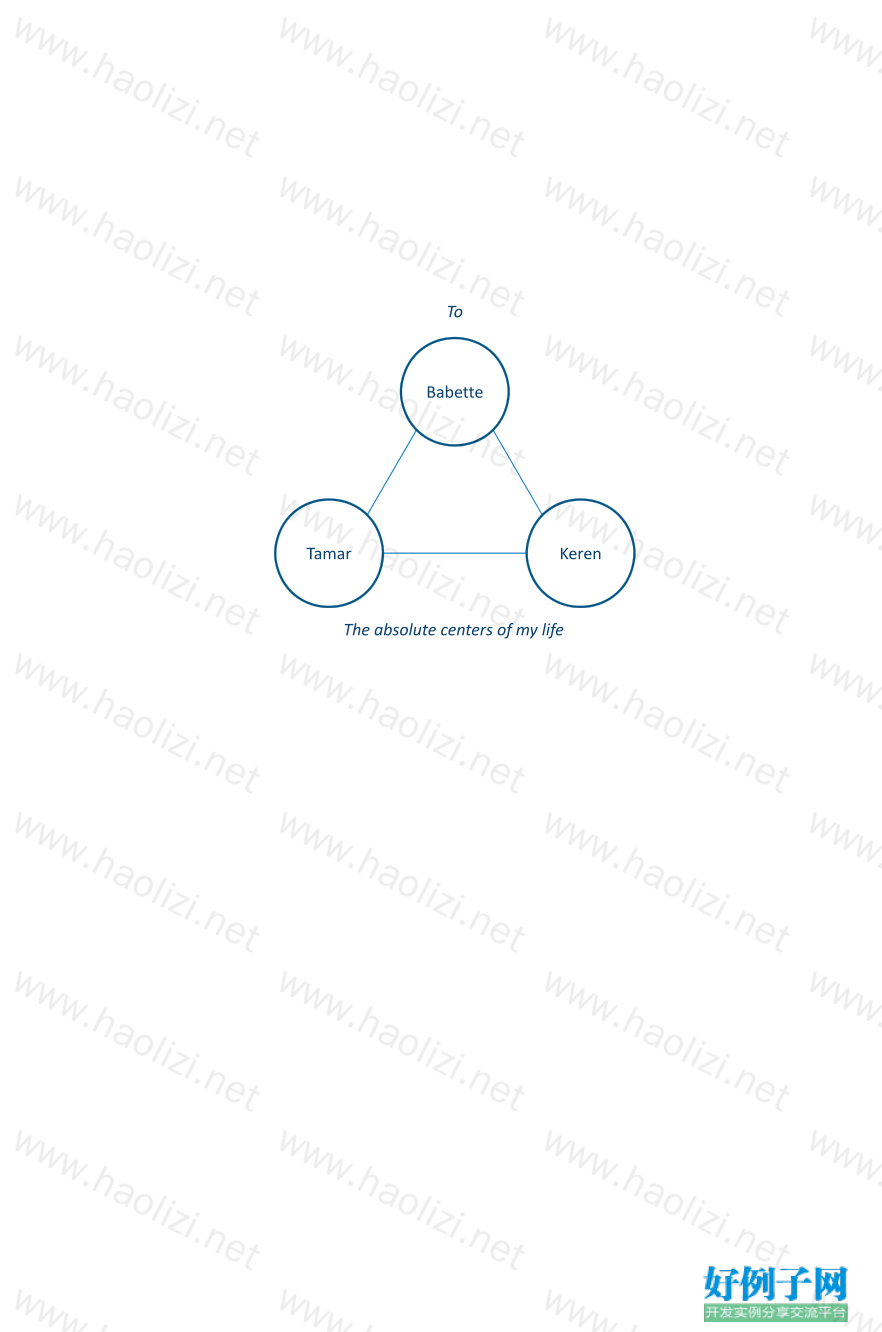
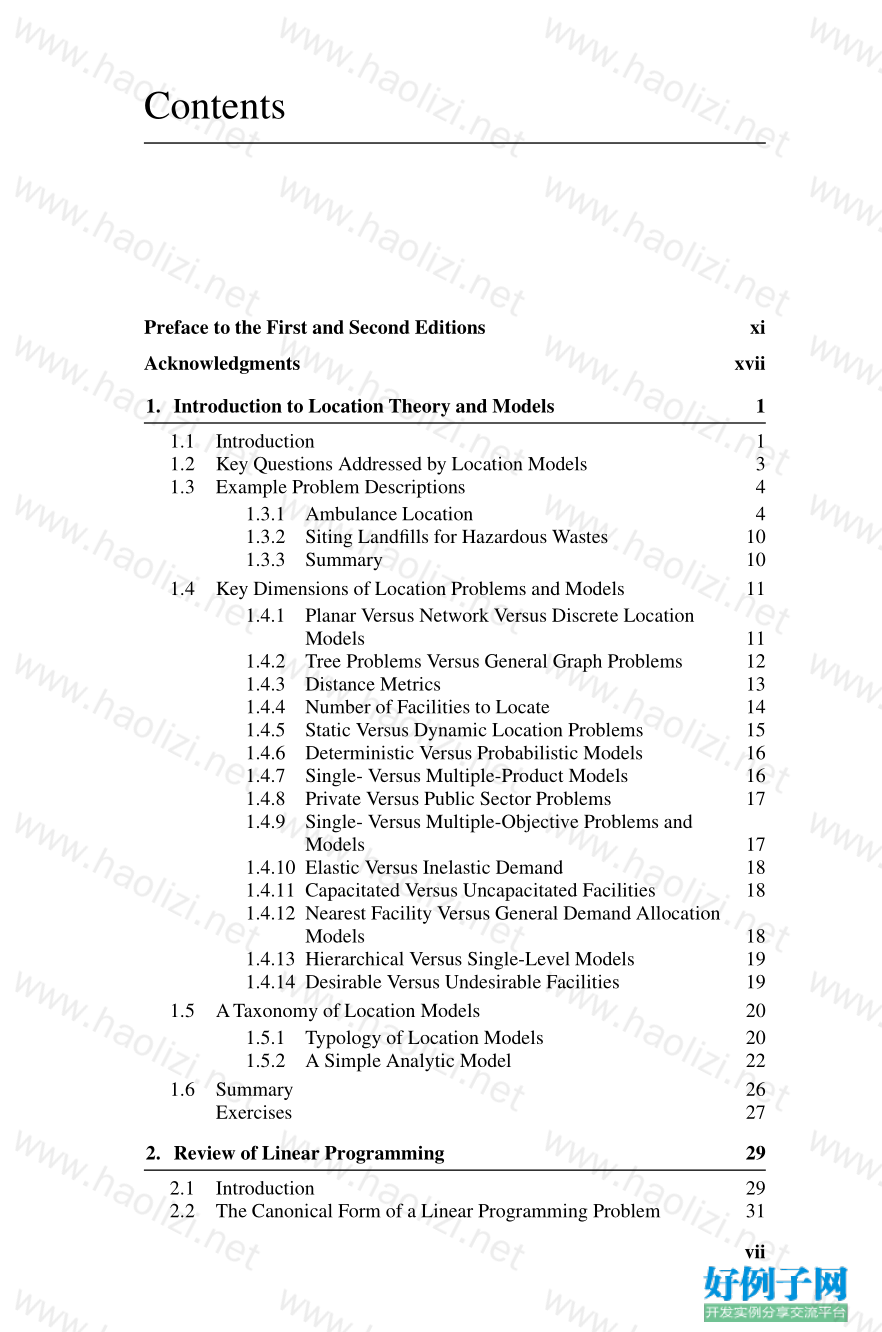
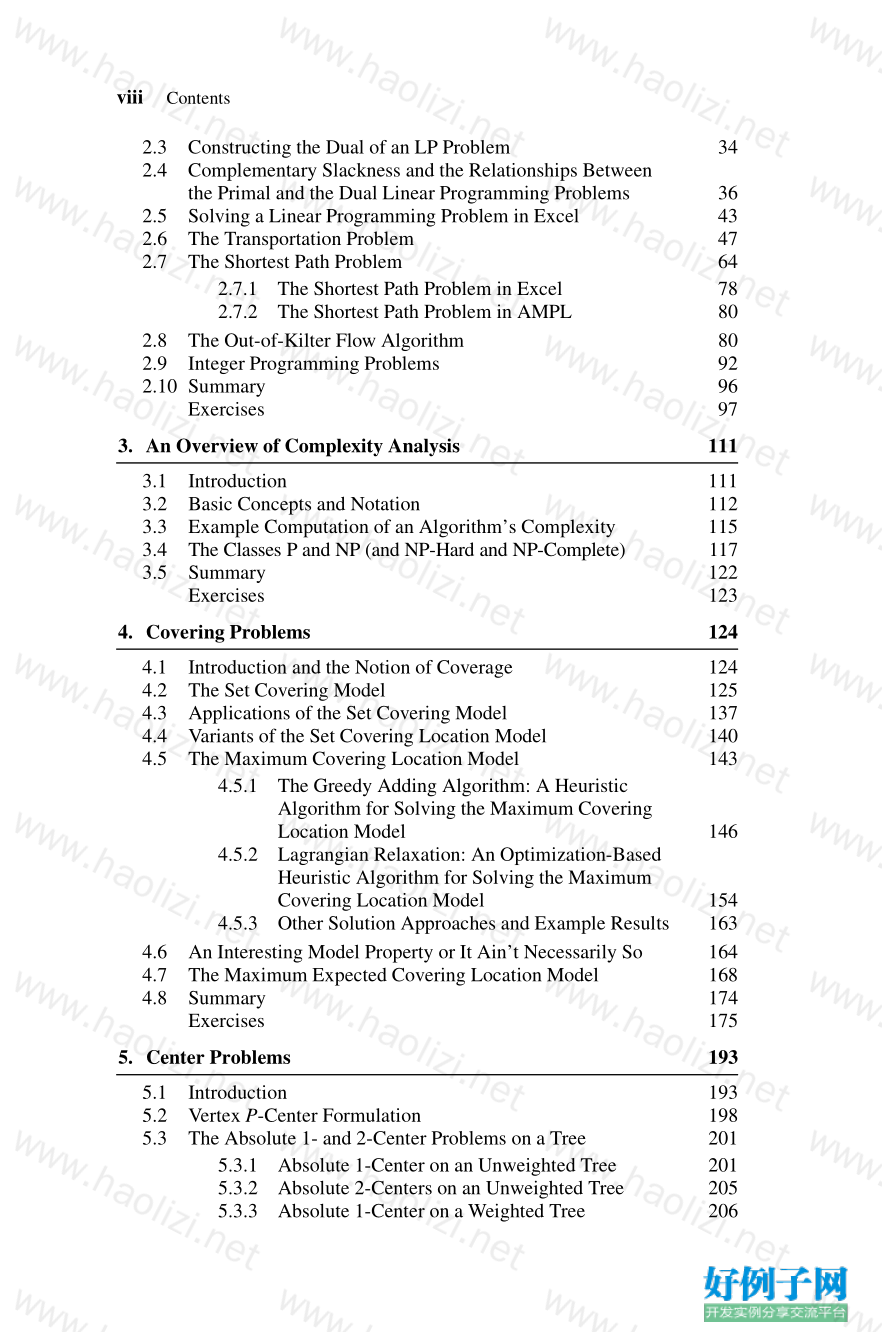

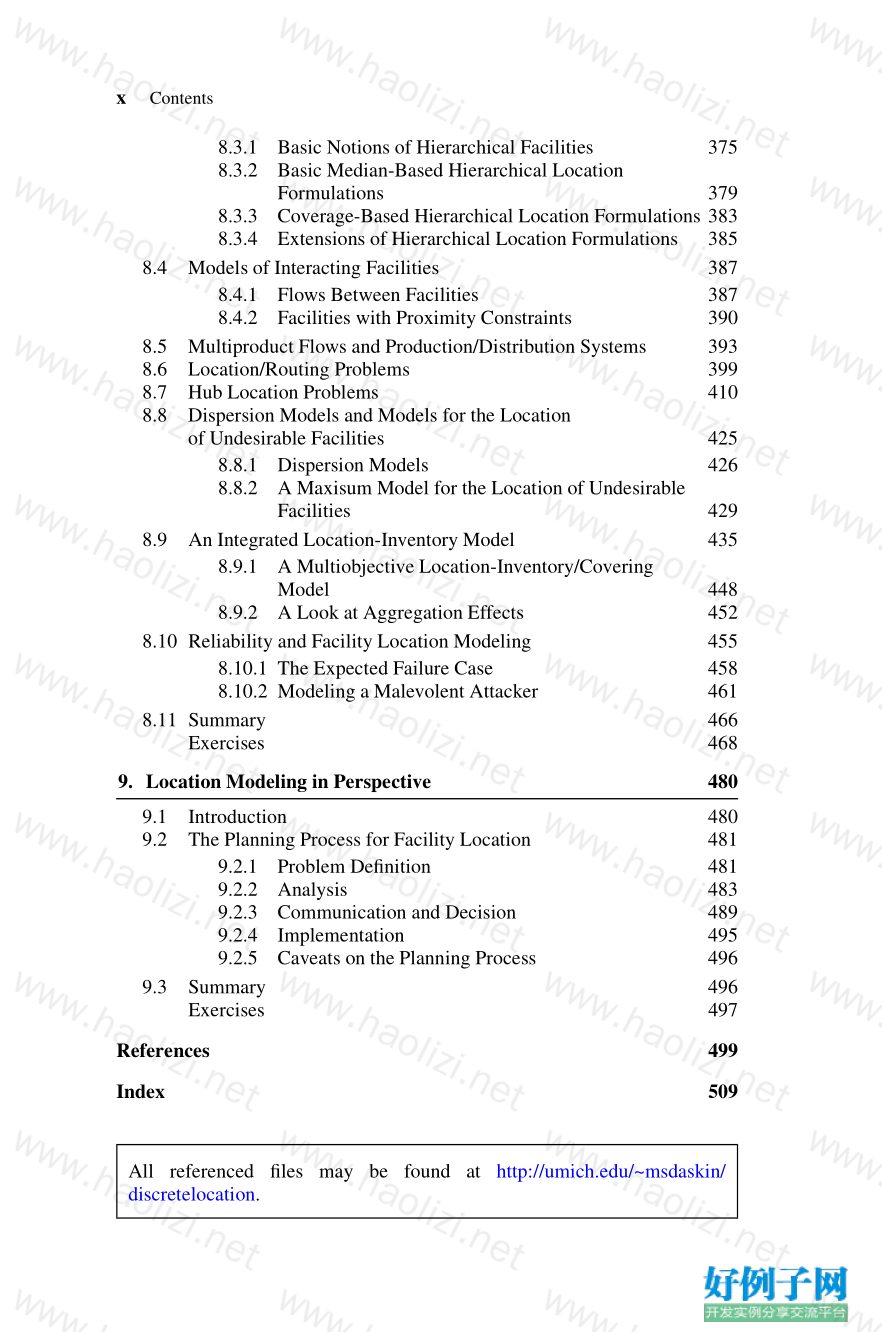
【核心代码】
Contents
Preface to the First and Second Editions
xi
Acknowledgments
xvii
1. Introduction to Location Theory and Models
1
1.1 Introduction
1
1.2 Key Questions Addressed by Location Models
3
1.3 Example Problem Descriptions
4
1.3.1 Ambulance Location
4
1.3.2 Siting Landfifills for Hazardous Wastes
10
1.3.3 Summary
10
1.4 Key Dimensions of Location Problems and Models
11
1.4.1 Planar Versus Network Versus Discrete Location
Models
11
1.4.2 Tree Problems Versus General Graph Problems 12
1.4.3 Distance Metrics
13
1.4.4 Number of Facilities to Locate
14
1.4.5 Static Versus Dynamic Location Problems
15
1.4.6 Deterministic Versus Probabilistic Models
16
1.4.7 Single- Versus Multiple-Product Models
16
1.4.8 Private Versus Public Sector Problems
17
1.4.9 Single- Versus Multiple-Objective Problems and
Models
17
1.4.10 Elastic Versus Inelastic Demand
18
1.4.11 Capacitated Versus Uncapacitated Facilities 18
1.4.12 Nearest Facility Versus General Demand Allocation
Models
18
1.4.13 Hierarchical Versus Single-Level Models
19
1.4.14 Desirable Versus Undesirable Facilities
19
1.5 A Taxonomy of Location Models
20
1.5.1 Typology of Location Models
20
1.5.2 A Simple Analytic Model
22
1.6 Summary
26
Exercises
27
2. Review of Linear Programming
29
2.1 Introduction
29
2.2 The Canonical Form of a Linear Programming Problem 31
vii2.3 Constructing the Dual of an LP Problem
34
2.4 Complementary Slackness and the Relationships Between
the Primal and the Dual Linear Programming Problems 36
2.5 Solving a Linear Programming Problem in Excel
43
2.6 The Transportation Problem
47
2.7 The Shortest Path Problem
64
2.7.1 The Shortest Path Problem in Excel
78
2.7.2 The Shortest Path Problem in AMPL
80
2.8 The Out-of-Kilter Flow Algorithm
80
2.9 Integer Programming Problems
92
2.10 Summary
96
Exercises
97
3. An Overview of Complexity Analysis
111
3.1 Introduction
111
3.2 Basic Concepts and Notation
112
3.3 Example Computation of an Algorithm’s Complexity 115
3.4 The Classes P and NP (and NP-Hard and NP-Complete) 117
3.5 Summary
122
Exercises
123
4. Covering Problems
124
4.1 Introduction and the Notion of Coverage
124
4.2 The Set Covering Model
125
4.3 Applications of the Set Covering Model
137
4.4 Variants of the Set Covering Location Model
140
4.5 The Maximum Covering Location Model
143
4.5.1 The Greedy Adding Algorithm: A Heuristic
Algorithm for Solving the Maximum Covering
Location Model
146
4.5.2 Lagrangian Relaxation: An Optimization-Based
Heuristic Algorithm for Solving the Maximum
Covering Location Model
154
4.5.3 Other Solution Approaches and Example Results 163
4.6 An Interesting Model Property or It Ain’t Necessarily So 164
4.7 The Maximum Expected Covering Location Model
168
4.8 Summary
174
Exercises
175
5. Center Problems
193
5.1 Introduction
193
5.2 Vertex P-Center Formulation
198
5.3 The Absolute 1- and 2-Center Problems on a Tree
201
5.3.1 Absolute 1-Center on an Unweighted Tree 201
5.3.2 Absolute 2-Centers on an Unweighted Tree 205
5.3.3 Absolute 1-Center on a Weighted Tree
206
viii
Contents5.4 The Unweighted Vertex P-Center Problem on a General Graph 211
5.5 The Unweighted Absolute P-Center Problem on a
General Graph
215
5.5.1 Characteristics of the Solution to the Absolute
P-Center Problem
215
5.5.2 An Algorithm for the Unweighted Absolute
P-Center on a General Graph
219
5.6 Summary
229
Exercises
230
6. Median Problems
235
6.1 Introduction
235
6.2 Formulation and Properties
237
6.3 1-Median Problem on a Tree
241
6.4 Heuristic Algorithms for the P-Median Problem
246
6.5 An Optimization-Based Lagrangian Algorithm
for the P-Median Problem
260
6.5.1 Methodological Development
260
6.5.2 Numerical Example
265
6.5.3 Extensions and Enhancements to the Lagrangian
Procedures
271
6.6 Computational Results Using the Heuristic Algorithms
and the Lagrangian Relaxation Algorithm
271
6.7 Another Interesting Property or It Still Ain’t Necessarily So 277
6.8 Summary
283
Exercises
285
7. Fixed Charge Facility Location Problems
294
7.1 Introduction
294
7.2 Uncapacitated Fixed Charge Facility Location Problems 297
7.2.1 Heuristic Construction Algorithms
298
7.2.2 Heuristic Improvement Algorithms
305
7.2.3 A Lagrangian Relaxation Approach
311
7.2.4 A Dual-Based Approach
314
7.3 Capacitated Fixed Charge Facility Location Problems 325
7.3.1 Lagrangian Relaxation Approaches
328
7.3.2 Bender’s Decomposition
345
7.4 Summary
355
Exercises
356
8. Extensions of Location Models
362
8.1 Introduction
362
8.2 Multiobjective Problems
362
8.3 Hierarchical Facility Location Models
375
Contents
ix8.3.1 Basic Notio
ns of Hierarchical
Facilities
375
8.3.2 Basic Median-Based Hierarchical Location
Formulations
379
8.3.3 Coverage-Based Hierarchical Location
Formulations 383
8.3.4 Extensio
ns of Hierarchical Location
Formulations 385
8.4 Model
s of Interacting
Facilities
387
8.4.1 Flows Between
Facilities
387
8.4.2 Facilities with Proximity Constraints
390
8.5 Multiprodu
ct Flows and Production/Distributi
on Systems
393
8.6 Location/Routing Problem
s
399
8.7 Hub Location Problems
410
8.8 Dispersion Models and Models for the Location
of Undesirable Facilities
425
8.8.1 Dispersi
on Models
426
8.8.2 A Maxisum Model for the Location of Undesirable
Facilities
429
8.9 An Integrated Location
-Inventory Model
435
8.9.1 A Multiobject
ive Location
-Inventory/Covering
Model
448
8.9.2 A Lo
ok
at Aggregation
Effects
452
8.1
0 Reliability and
Facility Location Modeli
ng
455
8.10.1 The Expect
ed
Failure Case
458
8.10.2 Modeli
ng
a Malevolent Attacker
461
8.1
1 Summary
466
Exercises
468
9. Locati
on Modeling in Perspective
480
9.1 Introduction
480
9.2 Th
e Planning Proce
ss for Facility Location
481
9.2.1 Problem Defifinition
481
9.2.2 Analys
is
483
9.2.3 Communication and Decision
489
9.2.4 Implementation
495
9.2.5 Caveats on the Planning Process
496
9.3 Summary
496
Exercises
497
References
499
Index
509











网友评论
我要评论